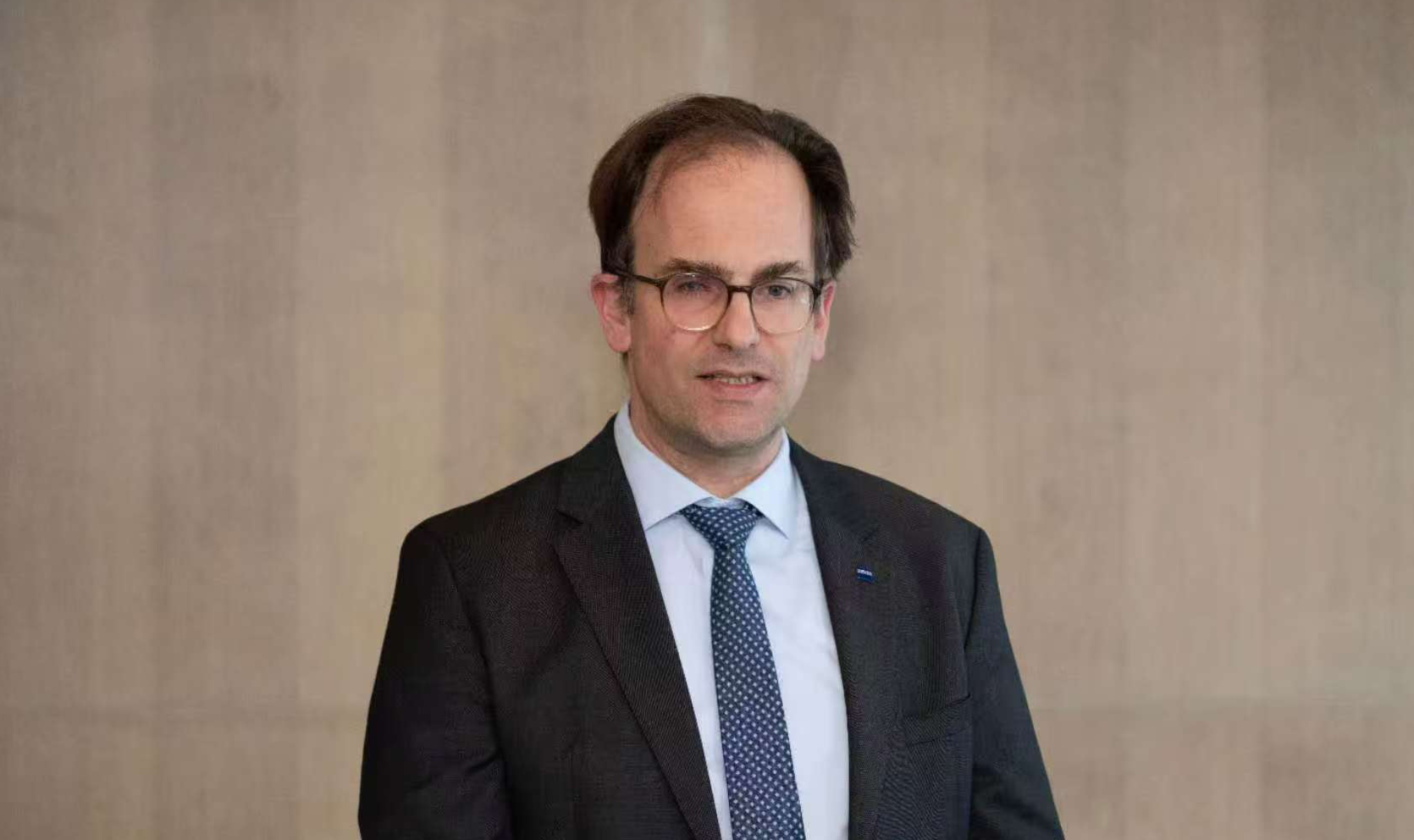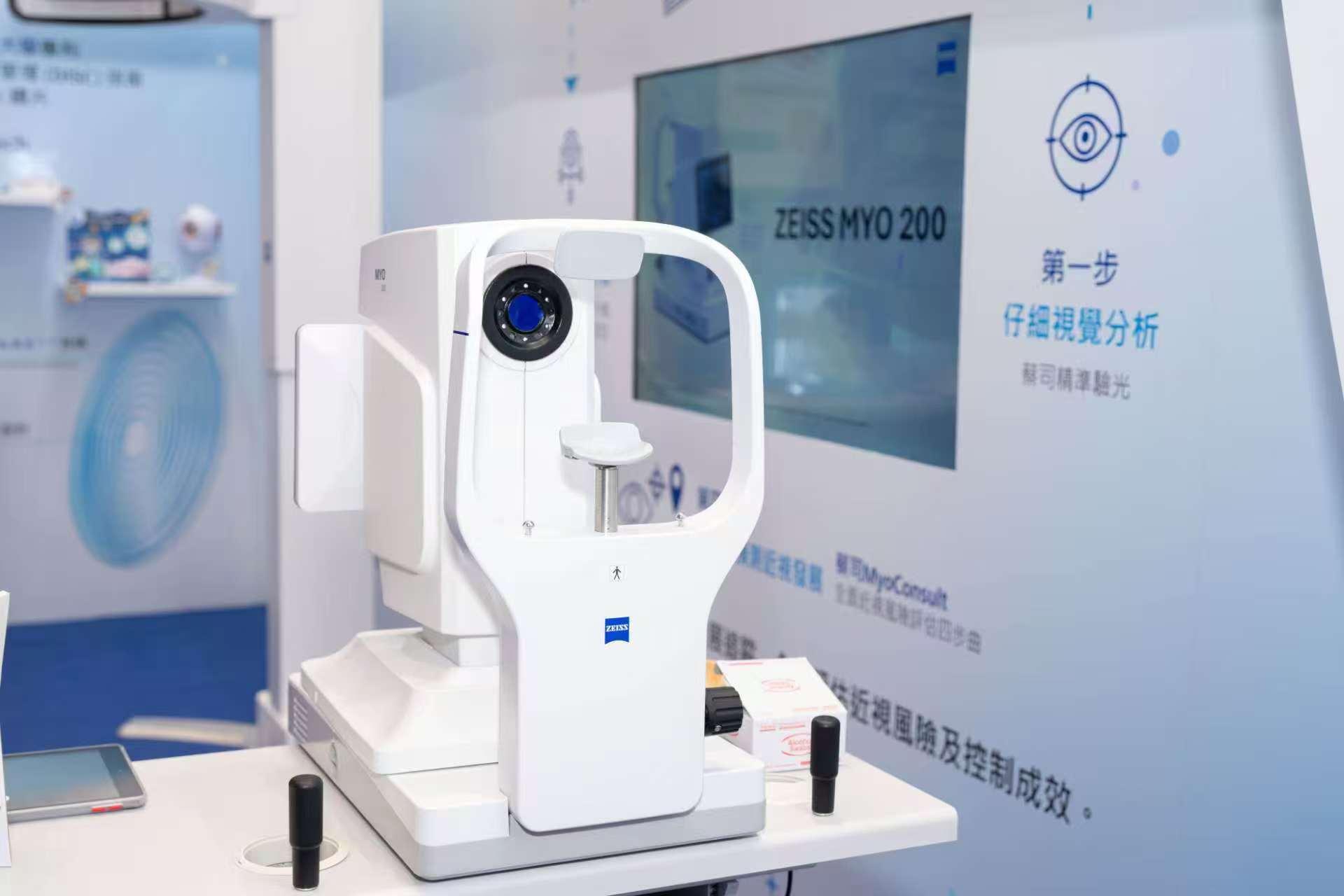ZEISS, a leading international technology enterprise operating in the fields of optics and optoelectronics, envisions promising prospects for its latest innovations in the Guangdong-Hong Kong-Macao Greater Bay Area, and aims to be a significant contributing factor to visual health for Hong Kong’s children and adolescents.
Calling Hong Kong “a very dynamic and competitive market, known for its high standards in optometry”, ZEISS has chosen the city as one of the first places to debut its new biometer tailored for more precise myopia control of children and adolescents.
Myopia — the medical term for short-sightedness or near-sightedness — is predicted by the American Academy of Ophthalmology to affect approximately half of the world’s population by 2050, with the highest prevalence in East Asia, which includes Hong Kong.
Over 40 percent of eight-year-old children in Hong Kong are already affected by myopia, according to the Hong Kong Children Eye Study conducted by the Chinese University of Hong Kong.

“The real medical problem is as people grow older, the risks of having serious damage to the eye increase a lot. The higher the myopia is, the more likely that someone may develop early-onset cataracts, glaucoma, retinal detachment, and macular degeneration,” explains Werner Schaefer, head of business development ZEISS MED China.

“In recent years, the high prevalence of myopia in Hong Kong has been accompanied by a trend of earlier onset and faster progression, which has raised widespread concern among parents,” says Jerome Chan, head of ZEISS Vision sales & service for Hong Kong & Macao.
“However, myopia can be prevented and controlled. Early detection and assessment of myopia risk combined with timely intervention can slow its progression,” Chan notes.
The complex mechanism of myopia development makes axial length a key factor affecting its progression. Children with myopia experience significantly faster growth in axial length compared to those with normal vision.
This underscores the significance of regular and precise monitoring of axial length to allow professionals to implement timely interventions, adjust management plans, and identify high-risk cases early, ultimately minimizing the likelihood of developing into high myopia in the future. This is where the newly launched ZEISS MYO 200 could come in.
Hailed as the inventor of the first optical biometer, the 178-year-old company introduced the first commercially available product to enable contactless, precise, high-speed measurement of cataracts in 1999. The MYO 200 was a logical development, given ZEISS’ strong portfolio of technological know-how.

Schaefer says he believes the high accuracy and good repeatability of optical measurement sits at the core of myopia management, and this is what he describes as “the big contribution” ZEISS has made to the market.
The “biggest highlight and breakthrough” of the ZEISS MYO 200 lies in the simplified process at no expense of accuracy, and the auto alignment and quick scan technology that effectively shorten examination time to just one minute, according to Chan.
At the heart of ZEISS’ leading edge is the “gold standard” it sets for the industry, with a tight tolerance less than or equal to 0.02 mm, Chan stresses.
“The flexibility, multi-mode, multi-scenario capabilities, and the convenience and precision empowers us to provide better eye service to children,” says Chan, who believes the reach and resonance of the new biometer goes well beyond traditional hospitals and established medical institutions, and has what it takes to play a vital role in communities, schools, eye clinics and optical retail stores.
To be sure, the ZEISS MYO 200 is more than just a high-precision optical biometry device. It is integral to a whole package of myopia management solutions that monitor changes in axial length and refractive power, and cover multiple services such as precise eye exams and glasses fitting, personalized lens and frame options, daily care routines, and eye development monitoring. By providing critical data, reinforcing the synergy between different stages and promoting efficiency in the entire myopia management process, the ZEISS MYO 200 plays its due role in eye development monitoring.
To fully back up its eye care vision, the German optics giant joined hands with the Hong Kong Polytechnic University this year to accelerate market penetration of patented myopia control technology. The latest collaborative initiative is ZEISS MyoCare Lenses designed to decelerate the rate of myopia progression.
Such a partnership, Chan points out, underscores ZEISS’ unswerving commitment to supporting the commercialization of cutting-edge ophthalmological technology to benefit the industry and society at large.
In a broader sense, Schaefer says the GBA market is of great importance to ZEISS, as the region not only stands as a crucial hub for product sales and employment, but also an indispensable element of its global business operations.
Nationwide, Schaefer says ZEISS is doubling down on collaborations with a number of centers in China to develop more of a reference database, in its pursuit of further helping eye care providers make more reasonable decisions with more data available.



